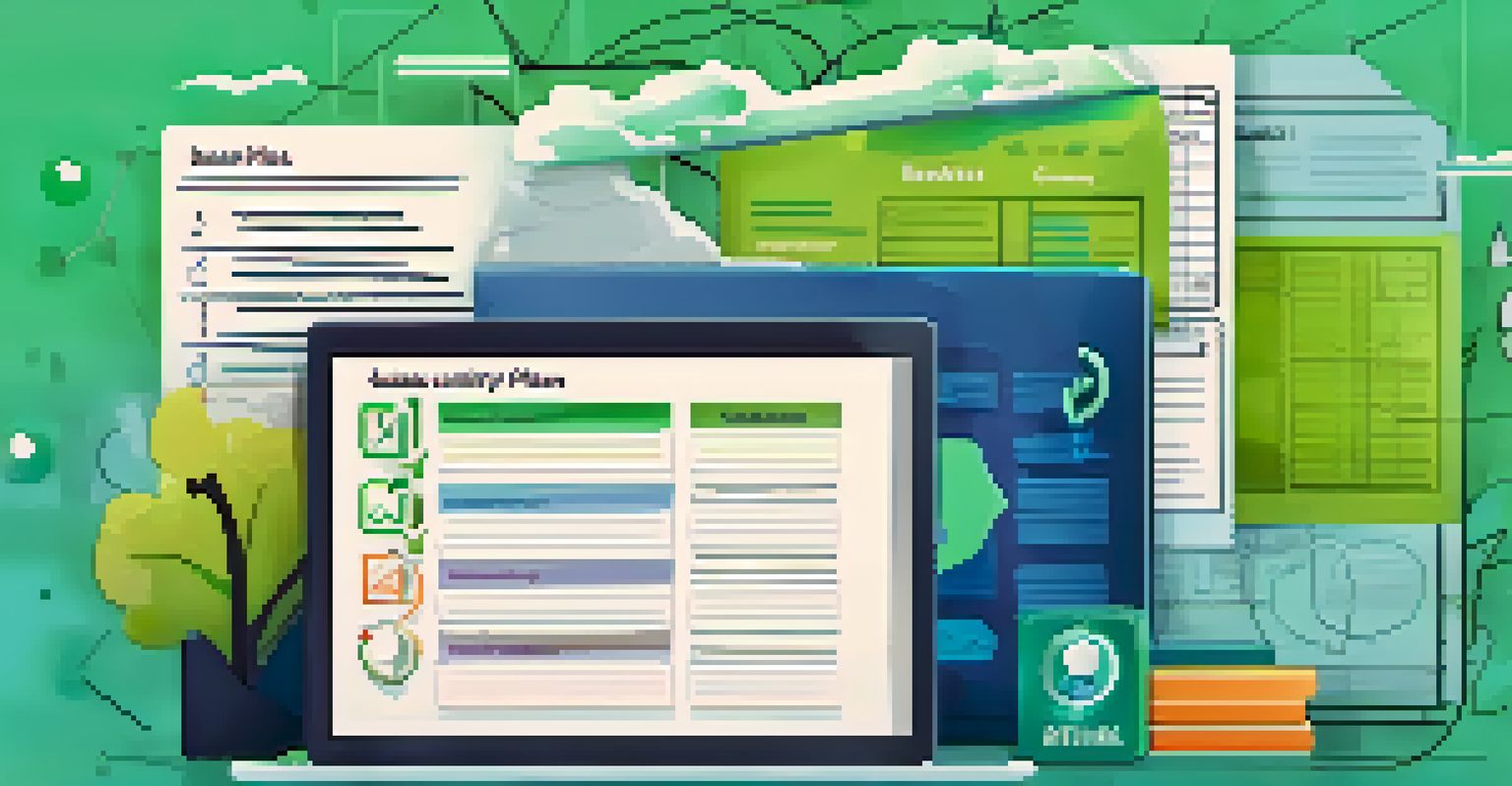How to Create a Business Continuity Plan Template for Your Business

Understanding the Importance of a Business Continuity Plan
A Business Continuity Plan (BCP) is essential for any organization, big or small. It acts as a roadmap to keep your business running during unexpected disruptions, whether they're natural disasters, cyberattacks, or pandemics. Without a solid BCP, your business could face significant operational challenges and financial losses.
By failing to prepare, you are preparing to fail.
Imagine your business as a ship navigating through stormy seas. A well-crafted BCP is like having a reliable compass and a skilled crew to guide you safely to shore. It ensures that you can respond quickly and effectively, minimizing downtime and maintaining customer trust.
Moreover, having a BCP in place can enhance your company’s reputation. Stakeholders, clients, and employees will feel more secure knowing that you have a plan ready to tackle any crisis, which can also lead to a competitive advantage in your industry.
Identifying Key Business Functions and Processes
The first step in creating your BCP template is identifying the critical functions and processes within your business. Consider what departments are essential for daily operations and which services are vital for customer satisfaction. This can include everything from IT functions to customer service and supply chain management.

To put this into perspective, think of your business as a car. Each part, from the engine to the wheels, plays a crucial role in keeping it running. If one component fails, the entire vehicle can come to a halt. By pinpointing these key areas, you can prioritize which functions need immediate attention during a crisis.
BCP is Essential for Business Continuity
A Business Continuity Plan (BCP) is crucial for maintaining operations during unexpected disruptions, protecting against significant losses.
Once you've identified these critical functions, document them thoroughly. This will serve as the foundation for your BCP, helping you understand where to focus your resources and planning efforts.
Conducting a Risk Assessment for Your Business
Next, it's time to conduct a thorough risk assessment. This means analyzing potential threats that could disrupt your business operations and evaluating their likelihood and impact. Common risks include natural disasters, IT failures, and workforce shortages, among others.
Plans are nothing; planning is everything.
Think of this step as playing a game of chess. You must anticipate your opponent's moves and prepare strategies to counteract them. By understanding the risks your business faces, you can develop proactive measures to mitigate them, ensuring that you’re always one step ahead.
Once you’ve identified and assessed these risks, categorize them based on severity. This will help you prioritize your response efforts and allocate resources effectively when creating your BCP template.
Establishing Recovery Strategies for Critical Functions
With your key functions identified and risks assessed, the next step is to establish recovery strategies. These strategies should outline how your business will respond to and recover from a disruption. Consider options like remote work setups, alternative suppliers, or backup systems to keep operations running smoothly.
Picture this as creating a safety net for your business. Just like a trapeze artist trusts their net to catch them if they fall, your recovery strategies provide a safety net that ensures you can bounce back quickly. This will help minimize the impact of any disruption on your operations.
Identify Key Functions and Risks
Recognizing critical business functions and conducting risk assessments allow organizations to prioritize resources and develop effective recovery strategies.
Document each recovery strategy in your BCP template so that everyone in your organization understands their role during a crisis. This not only fosters teamwork but also ensures a more coordinated response.
Creating a Communication Plan for Emergencies
A solid communication plan is vital to any BCP. During a crisis, clear and timely communication can make all the difference in maintaining morale and keeping stakeholders informed. Your plan should outline who will communicate, what information will be shared, and through which channels.
Think of your communication plan as a lifeline during a storm. It connects everyone, ensuring that information flows seamlessly, from management to employees and customers. This transparency helps build trust and prevents misinformation from spreading.
In your BCP template, include contact lists, templates for messages, and guidelines for communication protocols. This will ensure that everyone knows their responsibilities and can act quickly when needed.
Training Employees on the Business Continuity Plan
Once your BCP template is in place, it's crucial to train your employees on it. Conduct regular training sessions to familiarize your team with the plan and their specific roles during an emergency. This will empower them to act decisively and confidently when faced with a crisis.
Consider this training as a rehearsal for a play. Each cast member needs to know their lines and cues to ensure a successful performance. The more familiar your employees are with the plan, the smoother your response will be during a real-life scenario.
Regular Review Keeps BCP Effective
Ongoing reviews and updates to the BCP ensure it remains relevant and effective as the business evolves and new risks arise.
Incorporating simulations or tabletop exercises into your training can also help reinforce the plan. These hands-on experiences allow employees to practice their roles and identify any gaps in the plan, further enhancing preparedness.
Reviewing and Updating the Business Continuity Plan Regularly
Creating a BCP is not a one-and-done task; it requires regular review and updates. As your business evolves and new risks emerge, your plan should adapt accordingly. Schedule periodic reviews to assess the effectiveness of your BCP and make necessary adjustments.
Think of your BCP as a garden. Just as plants need regular watering and pruning to thrive, your BCP needs ongoing attention to remain effective. By staying proactive, you can ensure that your plan continues to meet the changing needs of your business.

Encourage feedback from employees during these reviews. They can provide valuable insights based on their experiences and help identify areas for improvement, making your BCP even stronger.